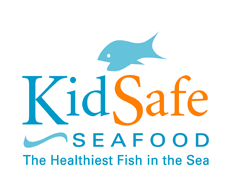 |
|
 |
|
What are Best Choices?
The KidSafe Program takes a precautionary approach where children's health is concerned. KidSafe Seafood recommendations are based on the US Environmental Protection Agency's risk-assessment methodology for two major seafood contaminants—mercury and PCBs—and the most comprehensive scientific data currently available. For parents who want to feed their children fish while limiting their exposure to toxic contaminants, KidSafe Seafood highlights some of the best options available.
The KidSafe Seafood list highlights fish that can be safely eaten at least once a week (4.35 times per month) by young children (age three and up). Following the EPA's guidelines, our calculations are based on an average body weight of 17.1 kg (~38 lbs) and a portion size of 3 ounces. The health limit for mercury is 0.14 ppm (parts per million). For PCBs, the health limit is 0.007 ppm.
Under the guidance of a panel of doctors and scientists, we collected and assessed published government and peer-reviewed scientific data from a wide variety of sources: the U.S. Food & Drug Administration, U.S. Environmental Protection Agency, the National Marine Fisheries Service, various state agencies, and academic studies.
Because most commercially-sold fish have not been adequately tested for contaminants, we also evaluated each fish based on its life history characteristics and body fat composition, as fish are more or less likely to be contaminated depending on a variety of factors. These include what they eat, how long they live, and how much body fat they have.
Some seafoods not on the KidSafe list may also be healthy choices for young children, but sufficient research has not yet been conducted. As more PCB and mercury data become available, the KidSafe Seafood Program will continually reassess and update the list.
All the KidSafe choices are sustainable, as determined by the leading environmental organizations monitoring the world's fisheries. KidSafe Seafood is also committed to providing consumers with complete information about all their favorite fish—even if they are not sustainable—so that they can make informed decisions about what to feed their families. KidSafe recommends that when the Best Choices aren't available, choose ocean-friendly seafood and follow the recommended maximum meals per month.For more information:
- If your favorite fish is not on the KidSafe list, click here to find out why.
- To review the criteria for KidSafe Seafood, please see our Methodology.
- To learn about mercury and PCBs and their impact on children’s health, click here.
- To review the EPA’s guidelines for assessing contaminants in fish, click here.
Home - Site Map - Privacy Policy - Donate - SeaWeb - Contact Us
© 2011 KidSafe Seafood